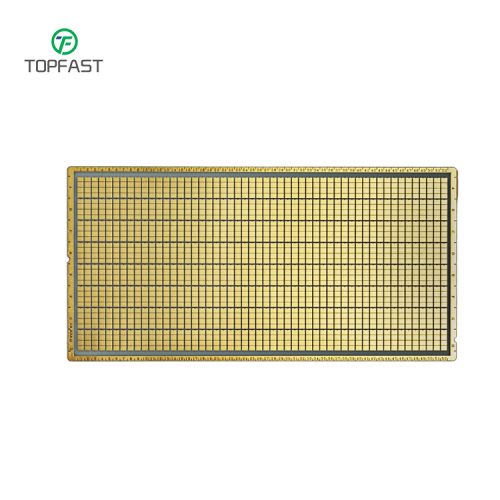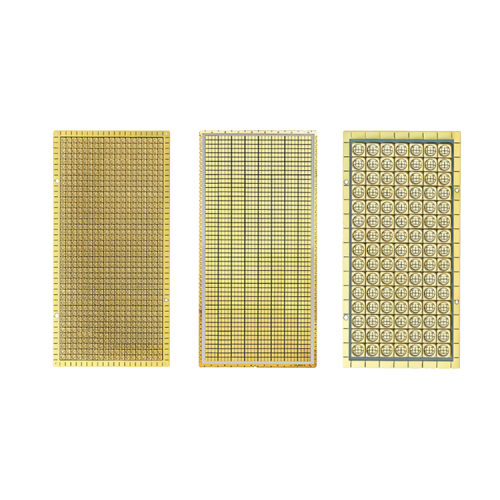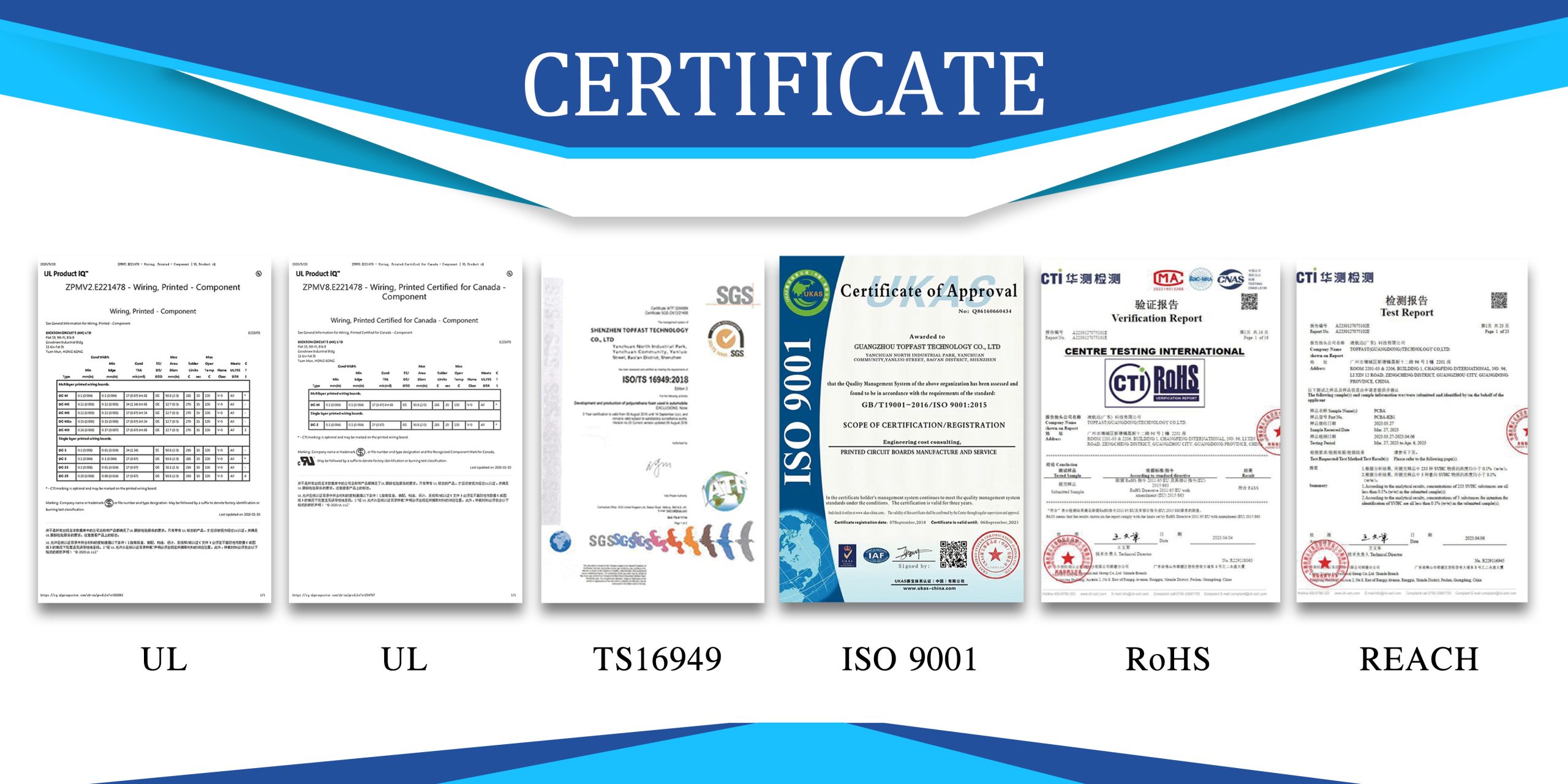14-Day 4-Layer PCBA Our Pledge
Faster & Professional Turnkey PCB Assembly Services
Get Instant Quote
Ceramic PCB Manufacturing Services
High-performance circuit boards using ceramic substrates with superior thermal conductivity, temperature resistance, and high-frequency characteristics.
✓ Materials
- Nano-ceramic powder
- High-precision conductive paste
✓ Process
- Laser processing (50μm micro-holes)
- Precision printing (50μm line width)
- Controlled sintering (multi-stage temperature control)
✓ Surface
- Selective electroplating
- ENEPIG treatment
✓ Quality Control
- Process inspection (AOI, X-ray)
- Final product inspection (thermal shock, bending strength)
- Special inspection (surface roughness, thermal conductivity)
Why Choose Ceramic PCBs?
High-performance substrates for demanding electronic applications
High-Temp Resistance
Withstands extreme heat (ideal for power electronics/automotive)
Superior Thermal Conductivity
AlN ceramics: 170-230W/mK (vs 1W/mK in standard PCBs)
Chemical/Corrosion Proof
Resists harsh chemicals (critical for aerospace/medical)
Built-in Insulation
No extra layers needed; safer for high-voltage use
Metal Bonding Strength
Strong Cu/Ti adhesion with matched thermal expansion
Durable & High-Frequency Ready
High hardness + low dielectric loss (perfect for RF/microwave)
Electrical Safety
High breakdown voltage prevents leakage

Ceramic PCB Types & Materials
Advanced ceramic substrates engineered for specialized performance requirements
| Material | Dielectric Constant | Thermal Conductivity (W/mK) | Thermal Expansion (CTE × 10⁻⁶/°C) | Purity | Typical Applications |
|---|---|---|---|---|---|
| Alumina (Al₂O₃) | 22-30 | 6.0-8.0 | 7.0-8.0 | 92%-99% | LEDs, power electronics, sensors, automotive |
| Aluminum Nitride (AlN) | 8.5-10 | 170-200 | 4.0-5.0 | 99% | Power LEDs, high-power modules, semiconductor bonding |
| Silicon Nitride (Si₃N₄) | 7-9 | 80 | 3.0-4.0 | High purity | Automotive electronics, aerospace, RF applications |
| Silicon Carbide (SiC) | 40-42 | 120-150 | 4.0-5.0 | High purity | High-temperature electronics, lasers, space systems |
| Beryllium Oxide (BeO) | 6.5-7.5 | 200-300 | 7.0-8.0 | High purity | RF amplifiers, space and military applications |
| LTCC | 5.0-15.0 | 2-5 | 6.0-7.0 | Varies | RF devices, medical implants, sensors, automotive |
| Hybrid Ceramic | Varies | Varies | Varies | Varies | Automotive, industrial, communication systems |
Key Selection Criteria:
- Thermal Management: AlN and BeO offer highest conductivity
- High-Frequency: Low dielectric materials (AlN, Si₃N₄) preferred
- Mechanical Strength: Si₃N₄ provides exceptional durability
- Cost Efficiency: Al₂O₃ balances performance and cost
Ceramic PCB Manufacturing Process
High-performance circuit boards for demanding applications. Contact US
Substrate Preparation
- High-speed dispersion mixing of Al₂O₃ powder and PVB adhesive (3-5 wt%)
- Made into green ceramic tape by cast extrusion or dry pressing
Patterning
- Screen printing: Printing circuit patterns using conductive paste
- Laser processing: High-precision direct etching
Laminated
- Multiple layers of raw porcelain aligned and stacked
- Apply heat and pressure to temporarily bond them together.
Sintering
- High-temperature sintering at 1500-1600°C
- Binder removal & densification
Surface Treatment
- Electroless nickel/gold plating (ENIG)
- Thick metal layer electroplating treatment
Post-Processing
- Laser/mechanical drilling
- Precision cutting
- X-ray/electrical testing
FAQ
What certifications do PCB factories have?
All of our products are IPC rated with ISO 14001; ISO 9001; CE; ROHS certificates, etc. Our products are widely used in communication, medical equipment, industrial control, power supply, consumer electronics and aerospace, automotive industry and other fields.
How many layers is a Ceramic PCB?
According to different needs, our factory can produce ceramic circuit boards using various processes. We can handle traditional processes with layer counts ranging from 2 to 8 layers, utilizing low-temperature co-fired ceramic (LTCC) and high-temperature co-fired ceramic (HTCC) technologies to achieve layer counts of 10-20 layers or even higher. In actual application we will choose according to the customer, the type of process required and demand.
Commonly used ceramic circuit board processes
Using the common ceramic circuit board thick film process, it is an advanced printed circuit board manufacturing technology with the advantages of easy multi-layer wiring, low cost, high temperature resistance, corrosion resistance, good mechanical strength, etc., which is widely used in the fields of electronics, communications, aerospace and so on.
Is it possible to produce a ceramic PCB with only a picture and no Gerber file?
We can’t produce without gerber file, we produce based on Gerber. Or if you have any samples, we can also clone based on the samples, if so, we can send 3-5 samples to our company, and then evaluate the price of making samples for you.
What is your delivery time?
The fastest delivery time we can support is 12 hours. 1 hour for prompt quotation. 4 hours for prompt engineering. This depends on your product requirements and quantity. In addition, lead time will be included in your quote.
Where are your circuit boards manufactured?
As a global PCB manufacturer, our factories are located in Guangzhou, China and Shenzhen, China, utilizing the strengths of each region to best serve you.
If you have any further questions or questions related to ceramic PCB manufacturing, please contact us.
Why choose Topfast?
Topfast has over 10 years of experience in the PCB industry and extensive expertise in the manufacturing and assembly of various types of PCBs. At every stage of the process, we conduct various tests and inspections to strictly control quality and ensure product reliability. All products comply with IPC standards and have obtained UL, ROHS, and ISO9001 certifications. We prioritize addressing customer needs, offering diverse customization services to ensure mutually beneficial collaboration, achieve cost minimization, and maximize production efficiency.
